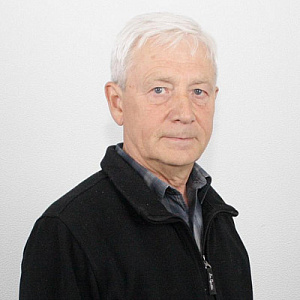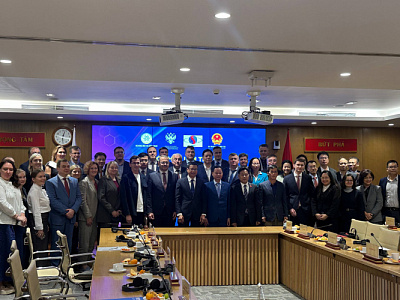Siberian School of Geosciences of INRTU Accelerated Geophysical Surveys by 15 Times Using UAVs
The Siberian School of Geosciences (SSG) conducts geophysical UAV surveys 15 times faster than traditional ground-based methods. The work is carried out within the framework of the i.GeoDesign strategic project (Priority 2030 Program). The experience of SSG was presented at the International Conference ‘Data Science, Geoinformatics and Systems Analysis in Geosciences’ of the Russian Academy of Sciences (Suzdal, Russia) by Sergey Gachenko, Head of the Department of Geoinformatics of SSG.
According to him, geophysical UAV survey is superior to walking routes in terms of speed and quality. An operator-geophysicist is able to walk with equipment and shoot up to 15 km of profile (300 km per month) per day, while a copter flies this distance several times faster. Taking into account the cost of landing and setting up the UAV parameters, the survey takes about two days.

"In a walking magnetic survey, there is a geological interference of 10 nTL caused by ground layer rock fragments. The drone works at a better quality level due to the distance from the rock material by at least 40-50 metres. The geological interference is significantly less or absent. This confirms the experience of unmanned geophysical works performed by the Siberian School of Geosciences," Sergei Gachenko noted.
The geography of INRTU geophysicists' work includes the Irkutsk Region, Krasnoyarsk and Altai Region, Kazakhstan and a number of remote areas of Russia. Scientists work in the Far North – Kamchatka, the Kola Peninsula and Chukotka, Yakutia and Magadan. Customers are large companies such as Polyus, Severstal, Amur Gold, Gazprom Proektirovanie, Highland Gold, Rosneft, Rizzi Resource, Russian Railways, GV Gold and others.
After conducting geophysical UAV surveys, engineers process the data in special information software created by the team of the Siberian School of Geosciences. Due to the speed and density of data collection by the copter, the INRTU engineers receive millions of physical observations that can be automatically converted into a visual format – graphs, route maps and 3D images. UAV surveying allows presenting information on remote areas, such as swamps, rivers, landslides, and high-mountainous areas. Based on the results of geophysical data processing, a map is created indicating the tectonics of the areas, ring structures and other geological elements.
"In one of the projects, the developed software made it possible to identify the smallest structural elements from the local magnetic field, showing the tectonics of the area and the distribution of gold quartz veins. Such information helps subsoil users to reduce the volume of drilling operations and their costs, and to organize mining operations as accurately and efficiently as possible", added Sergei Gachenko.Students of SSG also take part in field and desk work. They study the basics of magnetic prospecting and data processing.
Photo from the archive of the Siberian School of Geosciences



